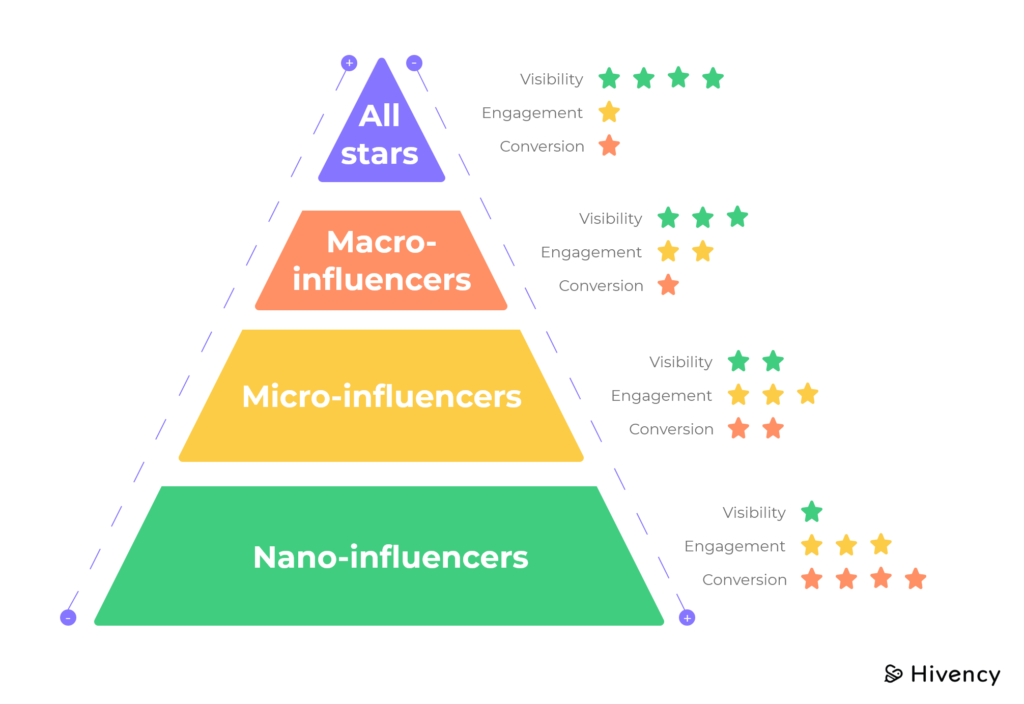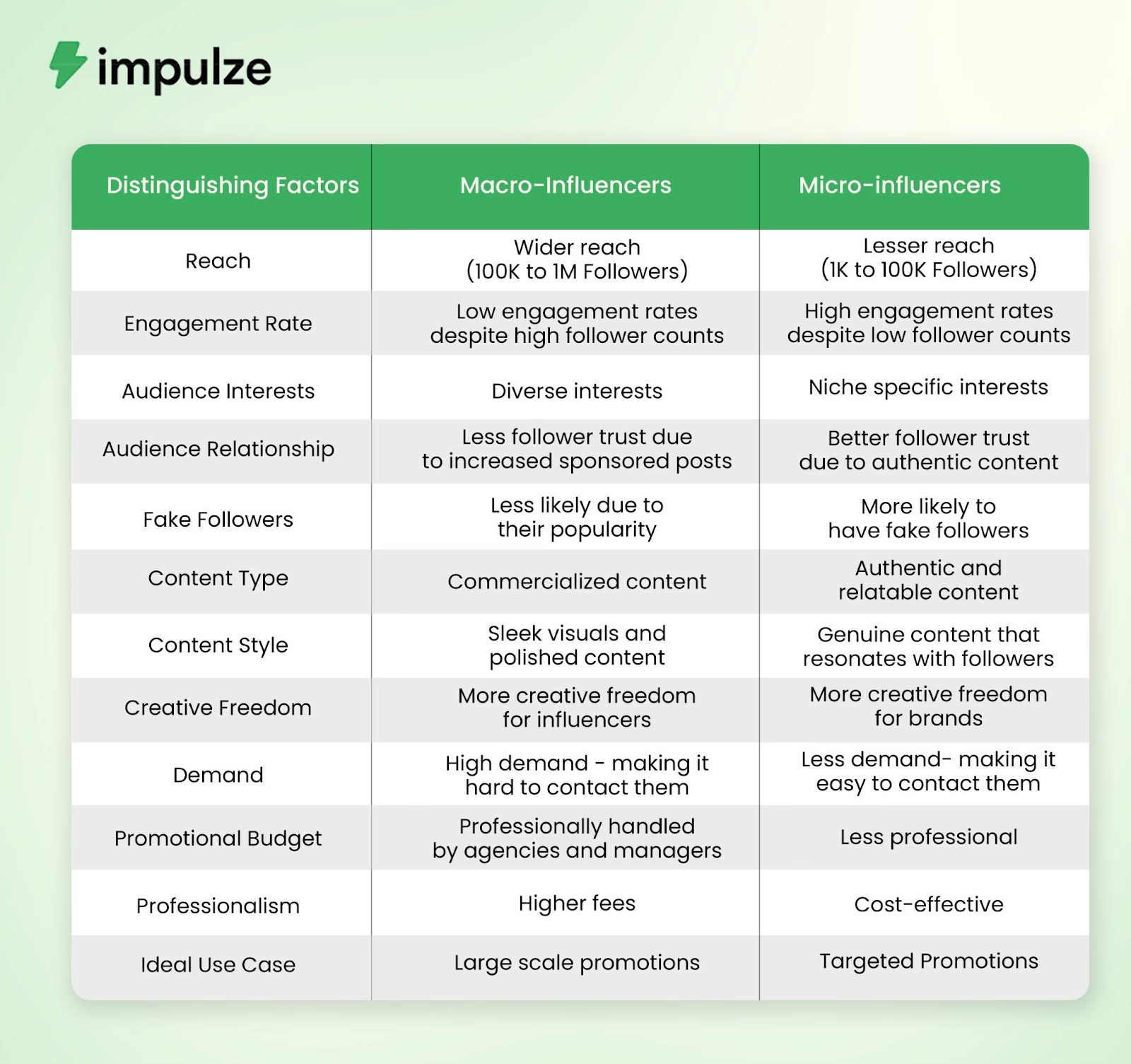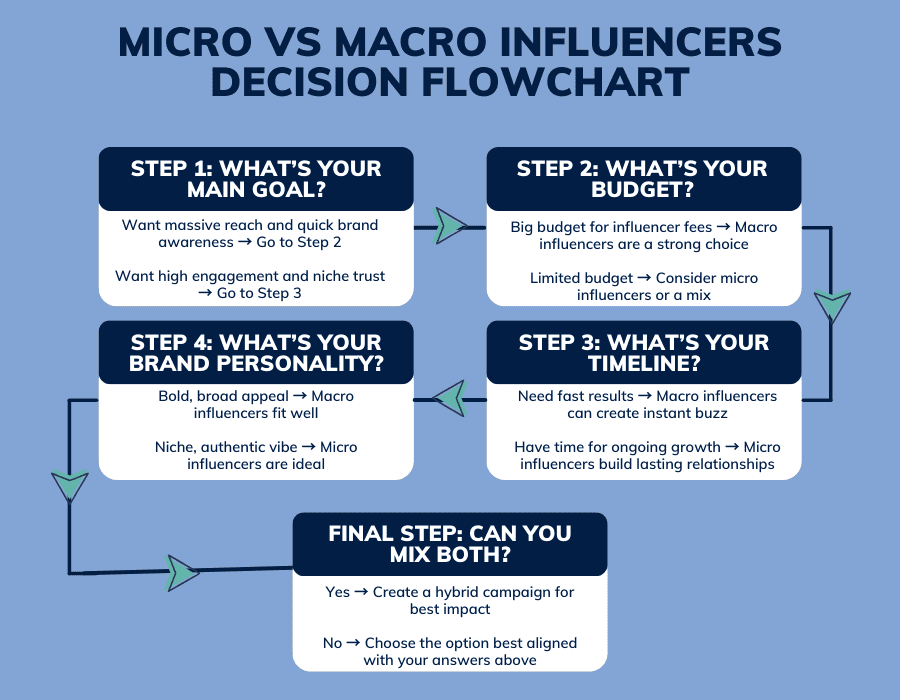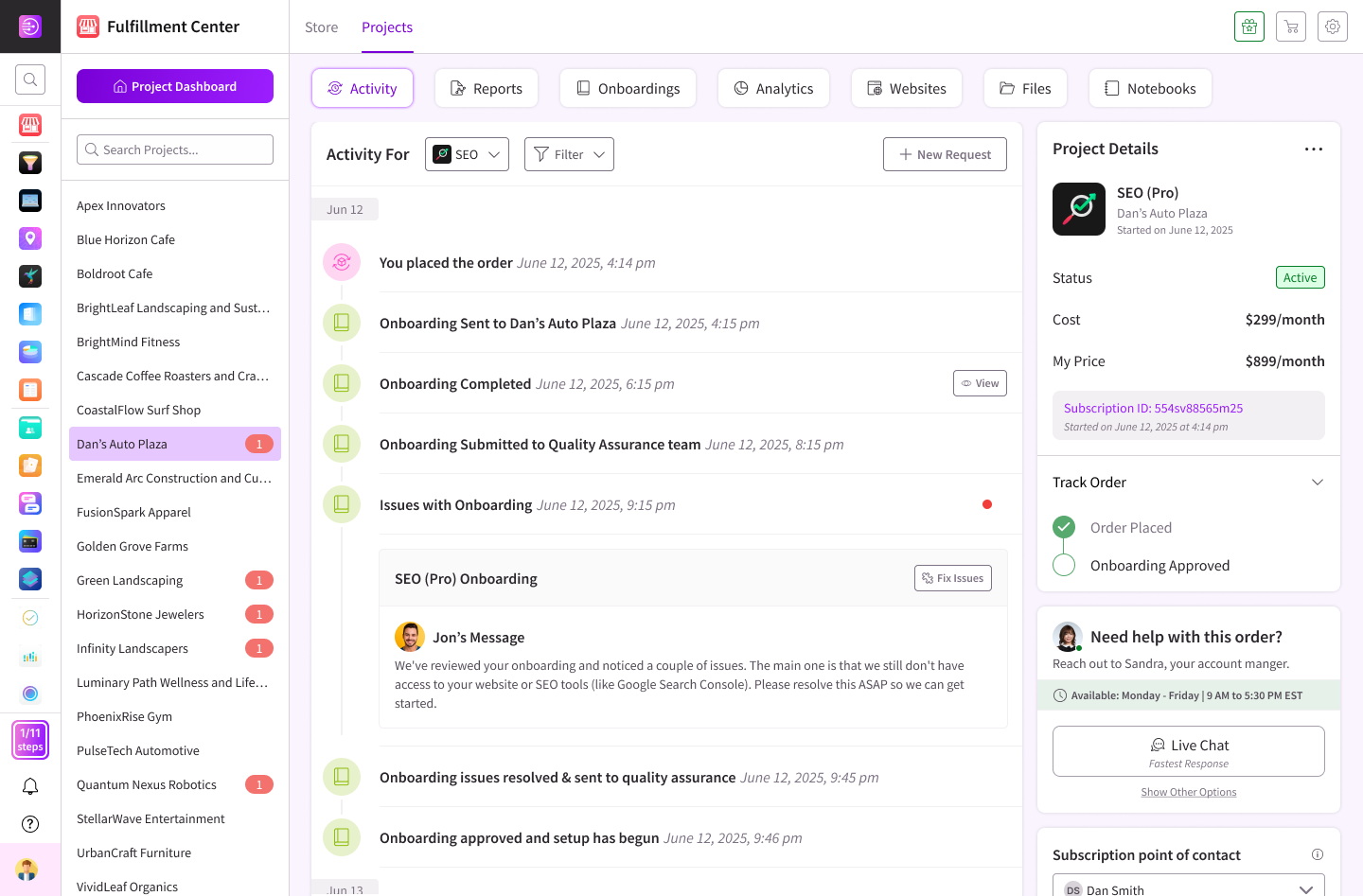The current digital landscape considers content creators more than just marketers’ partners. No, they are trusted voices and community leaders who set cultural trends.
Audiences are paying more attention to influencers, TikTokers, YouTubers, Twitch streamers, and niche authors to seek recommendations for what to buy or where to travel. It shouldn’t come as a surprise that studies indicate that traditional marketing methods bring less ROI than influencer marketing.
Having said all that, brands still have to figure out which content creator they should go with. And the decision often comes down to choosing between micro and macro influencers. One size fits all isn’t a possibility given how many different brands and content creators are out there. Each has its idiosyncrasies.
Let’s unpack the differences between micro and macro creators and explore the pros and cons each brings to the table.
Defining Micro and Macro Creators
First things first. It’s necessary to define what makes a content creator micro or macro. Consider the details below.
Micro Creators:
Has a follower range between 1,000 to 100,000. Highly engaged communities and niche expertise (think fitness, vegan recipes, local travel, beauty trends). Content feels authentic and conversational.
Micro-influencers hardly treat themselves as celebrities. If anything, they are seen as relatable peers with credibility in a particular niche. The followers interact actively via comments or direct DMs, which leads to a sense of community.
Macro Creators:
Has a follower range between 100,000 to 1M. Offers a broader reach across different demographics. Known for polished and professional content production. Recognized as a brand and provides higher visibility.
Macro-influencers operate at a large scale, which often involves a team supporting the content creation and other processes.
Nano and Mega Creators:
As a side note, it’s worth mentioning that nano-creators (less than 1,000 followers) and mega creators (1 million+ followers) exist as well. However, for most brands, the sweet spot is usually somewhere between a micro and a macro influencer rather than a very niche creator or a super celebrity.

Image Source: Skeepers
Advantages of Micro Creators
- Engagement and Authenticity: Micro creators enjoy higher engagement rates compared to macro creators. The audience sees a micro creator as an authentic voice, not an advertiser.
- Trust and Relatability: Micro creators focus on building a community around shared values or lifestyles. Followers feel a personal connection with someone they can relate to.
- Flexibility: They don’t have to deal with rigid management structures, so it’s easier to adapt campaign messages to suit the creator's style. This, in turn, leads to more natural and genuine content.
- Cost Effectiveness: Micro creators usually charge lower fees. Small and medium businesses have an easier time finding a creator to work with. And it’s common to collaborate with multiple micro-creators who are cheaper, to diversify reach.
Advantages of Macro Creators
- Large Reach: Macro creators expose brands to hundreds of thousands of people. In case of awareness campaigns or major product launches, such reach could make all the difference.
- Scalability: If a business wishes to scale quickly and do so in multiple regions or demographics, macro creators are far superior to their micro counterparts.
- Content Quality: Macro creators tend to invest more in content quality. The higher the content quality, the easier it is for brands to remain consistent with their brand identity.
- Stronger Brand Association: Brand perception reaches new heights when a business partners up with a well-known creator. The collaboration signals credibility, authority, and alignment with the current mainstream culture and trends.
Drawbacks to Consider
Micro Creators:
- Management Challenges: If a business opts to run with multiple micro creators, managing all the campaigns can require a lot of resources.
- Quality Concerns: Content quality varies since not all micro-creators have the tools or knowledge to produce good quality.
- Limited Reach: A single micro creator won’t deliver mass visibility. This might lead to working with multiple creators simultaneously, which, as stated before, complicates coordination.
Macro Creators:
- Reduced Authenticity: Some audiences may see a collaboration with a macro influencer as commercial, which diminishes trust.
- Engagement Rate: With the rise of follower count, engagement rate tends to decline over time. Macro influencers are less relatable.
- Costs: Fees for working with a macro creator could be significant and not affordable for some enterprises.

Image Source: Impulze
Matching Creators to Marketing Goals
Choosing between the two isn’t about one being better than the other. Businesses need to align the options with objectives. And once the plan is in place, they can focus on finding the most suitable content creator.
- Product Launch: When launching a new product, a hybrid approach is often the go-to. Macro creators give massive reach and visibility. Meanwhile, micro influencers build credibility and word of mouth within their niche audiences.
- Brand Awareness Campaigns: If the ultimate goal is to raise brand awareness and reach as many prospects as possible, macro creators are the most suitable option. The larger the audience, the broader the reach brands can expect.
- Engagement and Community: Micro-creators excel in encouraging UGC (user-generated content) or fostering loyalty. They are more intimate with their audiences, so it’s much easier to appear genuine and persuade followers to believe in an advertised brand.
Real-Life Example:
A relatively small TikTok content creator who works in a beauty product niche and pays close attention to the platform's viral trends and challenges is given the task of promoting a new face cream.
They opt for storytelling in a bathroom, face-to-camera, and weave the product into the narrative rather than the headline. The intimacy from a prospect's point of view feels like a one-on-one chat, and lands the recommendation as genuine.
How to Choose the Best Fit?
Choosing between macro and micro content creators takes more than one expects. However, the search becomes easier if you follow some basic principles.
- Define the Campaign Goals: Businesses should start by defining their campaign goals. They have to be explicit about seeking awareness, engagement, customers, or loyalty. The clearer the goal, the easier it is to choose the right creator.
- Analyze Audience Overlap: Don’t look at just the follower count. Pay attention to the creator’s audience and whether it aligns with the target audience. Also, double-check to confirm that the values and lifestyle are relevant.
- Evaluate Engagement: Check the metrics to determine how genuine the creator’s audience is. Look at likes, comments, shares, saves, and other available metrics.
- Consider Long-Term Collaborations: Ongoing collaborations tend to build stronger associations compared to one-off campaigns. If possible, find creators who are up for a long-term partnership.
- Test and Scale: Don’t overinvest in a particular partnership. Instead, start small and see how things are going. If the collaboration is smooth and valuable, scale it from there. And if not, seek alternatives and learn from what went wrong to adjust to the next campaign.

Image Source: Afluencer
Agency Perspective: Why It Matters?
For digital marketing agencies, the choice between micro and macro creators isn’t just about reach versus engagement — it’s about aligning the right influencer strategy with each client’s goals and budget. Agencies often juggle multiple clients across industries, each with unique expectations. That means one-size-fits-all influencer strategies rarely work.
1. Managing Multiple Clients with Different Goals: A local café might need five micro-influencers to build strong community buzz, while a national e-commerce brand may prefer one macro creator for mass visibility. Agencies must balance these needs while ensuring campaigns remain cost-effective, measurable, and scalable.
2. Offering Influencer Marketing as a White-Label Service: Not every agency has an in-house influencer team. By offering influencer marketing through white label content services, agencies can instantly expand their offerings without hiring new staff. This lets them provide influencer strategy, outreach, and content management under their own brand name — keeping clients happy while saving time and resources.
3. Packaging Influencer Partnerships into Service Bundles
Agencies can package micro and macro influencer collaborations into broader marketing bundles. For example:
- Brand Awareness Bundle → SEO + paid ads + macro influencer campaigns
- Community Growth Bundle → Social media management + micro influencer partnerships
- Product Launch Bundle → Hybrid campaigns with both micro and macro creators
By productizing influencer services in this way, agencies can sell repeatable solutions, improve client retention, and stand out from competitors.
In short, agencies that understand how to balance micro and macro creators not only deliver better results for clients but also strengthen their own business model.
DashClicks’ White Label Social Media Management Services
Managing multiple social media campaigns for clients can be time-consuming and resource-intensive for agencies. DashClicks’ White Label Social Media Management Services empower agencies to deliver high-quality, results-driven social media campaigns under their own brand — without the overhead of an in-house team.
Whether your clients need consistent posting, audience engagement, influencer collaborations, or performance reporting, our services cover it all. From strategy to execution, we make it easy for agencies to scale social media offerings across multiple clients.
- End-to-End Social Media Management – Content creation, scheduling, posting, and engagement across platforms like Instagram, TikTok, Facebook, LinkedIn, and more.
- Influencer Integration – Leverage micro and macro creators in your campaigns to maximize engagement and reach.
- Analytics & Reporting – Track campaign performance, engagement, and growth with professional, branded reports.
- Scalable Solutions – Manage campaigns for one client or dozens, all under your agency’s name.
- Flexible Collaboration – Tailor services to client goals, whether it’s awareness, engagement, lead generation, or community building.
With DashClicks, agencies can offer full-service social media management that drives results, strengthens client relationships, and scales without adding internal staff. Deliver campaigns that engage, convert, and build lasting brand authority — all under your own agency’s brand.
Conclusion
Ultimately, choosing between micro and macro content creators comes down to strategic alignment. Both options have their ups and downs, so focusing on which one is inherently better shouldn’t be the approach.
Micro creators excel in authenticity and cost effectiveness, while macro creators deliver reach and authority.
The most effective campaigns blend the two options, but the full power behind creator partnerships is unlocked once businesses clarify their goals and carefully analyze the targeted audiences.



.svg)

.svg)
.svg)
.svg)
.svg)
.svg)

.svg)




.svg)
.svg)
.svg)
.svg)
.svg)